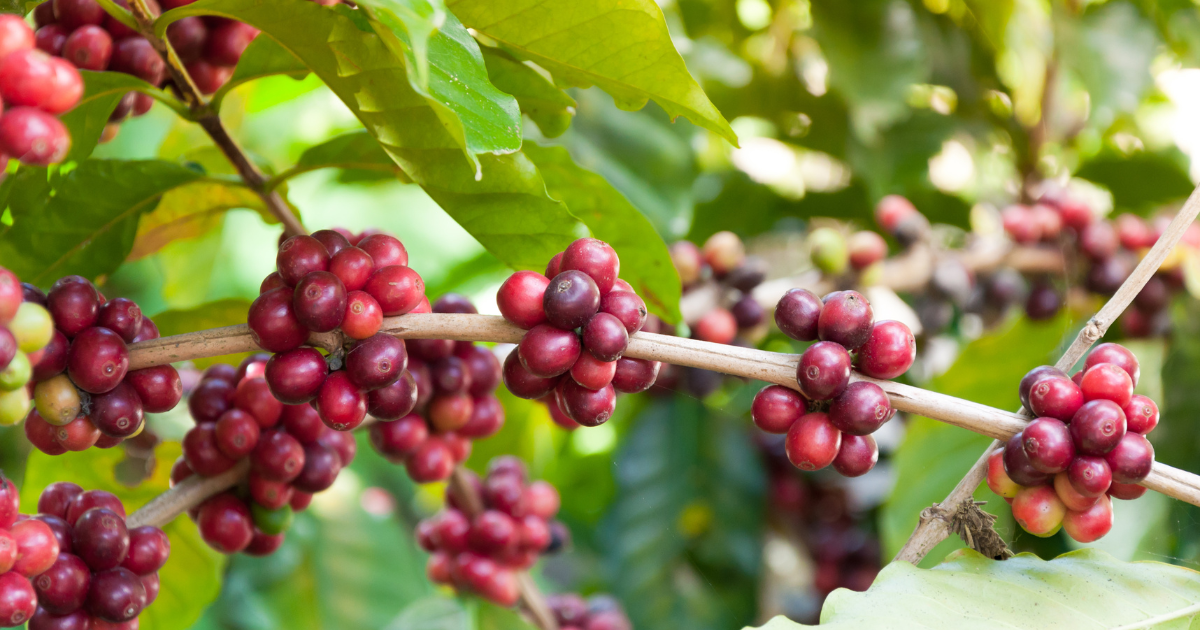You’ve invested in quality coffee beans, perhaps a single-origin gem or a meticulously crafted blend. You’ve learned about their origin, their roast, and even mastered your brewing technique. But there’s one critical step that can undermine all your efforts, often overlooked: coffee storage. Just like any fresh produce, coffee is perishable, and its delicate aromas and flavors are highly susceptible to degradation if not stored correctly. Improper storage can quickly turn even the finest beans into a stale, flat, or even unpleasant brew.
Have you ever wondered why your coffee starts to lose its vibrancy just a few days after opening the bag? Or if freezing coffee is actually a good idea? This comprehensive guide will take a deep dive into the science of keeping coffee fresh, revealing the primary enemies of flavor and equipping you with practical, actionable tips to protect your precious beans. We’ll explore the ideal environments, debunk common myths, and recommend the best containers to ensure every cup you brew delivers optimal flavor and aroma, from the first sip to the last. Get ready to master the often-underestimated final frontier of quality coffee preparation: intelligent coffee preservation.
The Four Foes of Coffee Freshness
To effectively preserve coffee’s vibrant flavors, it’s essential to understand its main adversaries. There are four primary factors that accelerate the staling process, causing your coffee to lose its delightful aromas and develop undesirable notes. By controlling these elements, you can significantly extend the life and quality of your roasted beans, ensuring a delicious experience with every brew.
Oxygen: The Silent Flavor Thief
- Oxidation: When roasted coffee comes into contact with oxygen, it undergoes a chemical process called oxidation. This breaks down the volatile flavor compounds that give coffee its unique aroma and taste.
- Result: The coffee quickly develops stale, flat, or even rancid flavors, losing its brightness and complexity. Think of how a cut apple turns brown when exposed to air; a similar, though less visible, process happens to coffee.
- Mitigation: The key is to minimize air exposure. This means storing coffee in airtight containers immediately after opening or purchasing.
Moisture: The Flavor Diluter and Spoiler
- Absorption: Coffee is hygroscopic, meaning it readily absorbs moisture from its surroundings. This is especially true for roasted coffee, which is porous.
- Flavor Dilution: When coffee absorbs moisture, it can dilute its concentrated flavors and aromas, making the brew taste weaker or less expressive.
- Mold and Mildew: In extreme cases, high humidity can lead to mold or mildew growth, rendering the coffee unsafe to consume.
- Mitigation: Keep coffee in a dry environment. Avoid storing it near sinks, in refrigerators (which have high humidity), or in any area prone to condensation.
Light: The Accelerator of Degradation
- UV Exposure: Both natural sunlight and artificial light (especially UV rays) can accelerate the degradation of delicate oils and aromatic compounds in roasted coffee.
- Loss of Volatiles: Light exposure breaks down these compounds, leading to a rapid loss of freshness and the development of off-flavors.
- Result: Coffee becomes flat, dull, and less aromatic, losing its characteristic brightness and zest.
- Mitigation: Store coffee in opaque containers that block light, or in a dark cupboard or pantry.
Heat: The Flavor Destroyer
- Accelerated Chemical Reactions: Heat dramatically speeds up all chemical reactions, including those that lead to staling. The warmer the coffee, the faster its precious oils will turn rancid and its volatile compounds will dissipate.
- Loss of Aromatics: High temperatures cause aromatic gases to escape rapidly, stripping the coffee of its complex fragrance.
- Result: The coffee loses its vibrancy, tasting baked, bland, or prematurely stale.
- Mitigation: Store coffee in a cool place, away from direct sunlight, ovens, stovetops, or any heat-generating appliances.
The Ideal Environment for Coffee Preservation
Knowing the enemies of freshness, we can now outline the optimal conditions for storing coffee beans. The goal is to create an environment that minimizes exposure to oxygen, moisture, light, and heat, thereby preserving the intricate flavors and aromas that the roaster meticulously developed. Simple yet effective strategies can make a world of difference.
Airtight Containers: Your First Line of Defense
- Vacuum-Sealed or One-Way Valve: The most effective way to combat oxygen is using airtight coffee containers.
- Vacuum-sealed containers remove most of the air, significantly slowing oxidation.
- Containers with a one-way valve (degassing valve) are excellent for freshly roasted coffee. Roasted beans release CO2 for days after roasting; this valve allows gas to escape without letting oxygen in, preventing bag puff-up and extending freshness. Many high-quality coffee bags come with these built-in.
- Material Choice: Opaque materials like ceramic, dark glass, or stainless steel are preferred to block light. Avoid clear containers unless stored in a dark cupboard.
- Size Matters: Choose a container that’s appropriately sized for the amount of coffee you have. Less empty space inside the container means less air exposure.
- Avoid Ziploc Bags: While convenient, standard ziploc bags are not truly airtight and allow significant air exchange, making them unsuitable for long-term coffee preservation.
Cool, Dark, and Dry Locations
- Pantry or Cupboard: The best place to store your coffee is in a cool, dark, and dry place, such as a pantry or a kitchen cupboard away from appliances that generate heat.
- Consistent Temperature: A stable temperature is more important than extreme cold. Avoid fluctuations that can lead to condensation inside the container.
- Avoid the Refrigerator: Despite common belief, the refrigerator is not a good place for roasted coffee.
- Humidity: Refrigerators are humid environments, and coffee will absorb moisture and odors from other foods, leading to off-flavors.
- Condensation: Frequent opening and closing can cause condensation to form inside the coffee container, damaging the beans.
- Smell Absorption: Coffee is a natural deodorizer, meaning it will absorb the smells of everything else in your fridge.
Dispelling Myths and Practical Tips for Longevity
Beyond the ideal storage conditions, there are common questions and myths surrounding coffee preservation. Understanding the realities of coffee’s shelf life, the role of freezing, and the importance of grinding can further empower you to enjoy coffee at its peak, maximizing its flavor and ensuring your investment in quality beans truly pays off.
To Freeze or Not to Freeze?
This is one of the most debated topics in coffee storage.
- Short-Term (Avoid): Freezing small amounts of coffee for daily use is generally not recommended. Frequent freezing and thawing cycles can cause moisture condensation, leading to flavor degradation and freezer burn.
- Long-Term (If Necessary): If you purchase a large quantity of high-quality, freshly roasted coffee that you won’t consume within 2-4 weeks, freezing can be an option for long-term preservation.
- Method: Divide the coffee into single-serving portions (e.g., enough for one week’s use) in small, airtight, vacuum-sealed bags or containers. Freeze quickly.
- Thawing: When ready to use, remove a portion from the freezer and let it come to room temperature before opening the bag. This prevents condensation from forming on the beans. Do not refreeze.
- Whole Bean vs. Ground: Always freeze whole beans. Ground coffee has vastly increased surface area and will stale rapidly, even in the freezer. Freezing ground coffee is almost always detrimental to flavor.
The Importance of Grinding Fresh
- Surface Area: This cannot be stressed enough: ground coffee stales incredibly fast. As soon as coffee is ground, its surface area increases exponentially, exposing countless flavor compounds to oxygen.
- Rapid Deterioration: Within minutes, much of the coffee’s delicate aromatics begin to dissipate, and oxidation accelerates dramatically. Pre-ground coffee, no matter how well stored, will never taste as vibrant as coffee ground just moments before brewing.
- Recommendation: Always buy whole bean coffee and grind it immediately before brewing. This is the single most impactful step you can take to ensure maximum freshness and flavor in your cup, overriding any storage method for ground coffee.
Roast Date vs. Best By Date
- Roast Date: Always look for a roast date on your coffee bag. This tells you exactly when the beans were transformed from green to roasted.
- Peak Freshness: Coffee is typically at its peak flavor between 4 days and 4 weeks after roasting. The first few days allow for degassing, and after that, the flavors mature.
- Best By Date: A “best by” date is much less useful, as it doesn’t indicate true freshness. It’s often set far into the future (e.g., 6-12 months) and only indicates when the coffee might start to taste truly bad, not when it tastes its best.
- Buy Fresh, Buy Smaller: To ensure you’re always drinking coffee at its best, purchase smaller quantities of freshly roasted whole beans more frequently, rather than large bags that sit for months.
Mastering coffee storage is the crucial final step in ensuring your brew consistently delivers optimal flavor and aroma. By understanding and combating the four primary enemies of freshness—oxygen, moisture, light, and heat—you can protect your precious beans and fully appreciate the investment you’ve made in quality coffee.
Remember: airtight containers made of opaque materials, stored in a cool, dark, and dry place are your best allies. Dispelling myths like refrigerating coffee and embracing the golden rule of grinding fresh just before brewing will transform your coffee experience. Always prioritize coffee with a clear roast date and consume it within its peak freshness window. By implementing these essential coffee preservation tips, every cup you brew will be a testament to flavor, vibrancy, and thoughtful preparation, honoring the intricate journey of the bean from farm to your mug.

